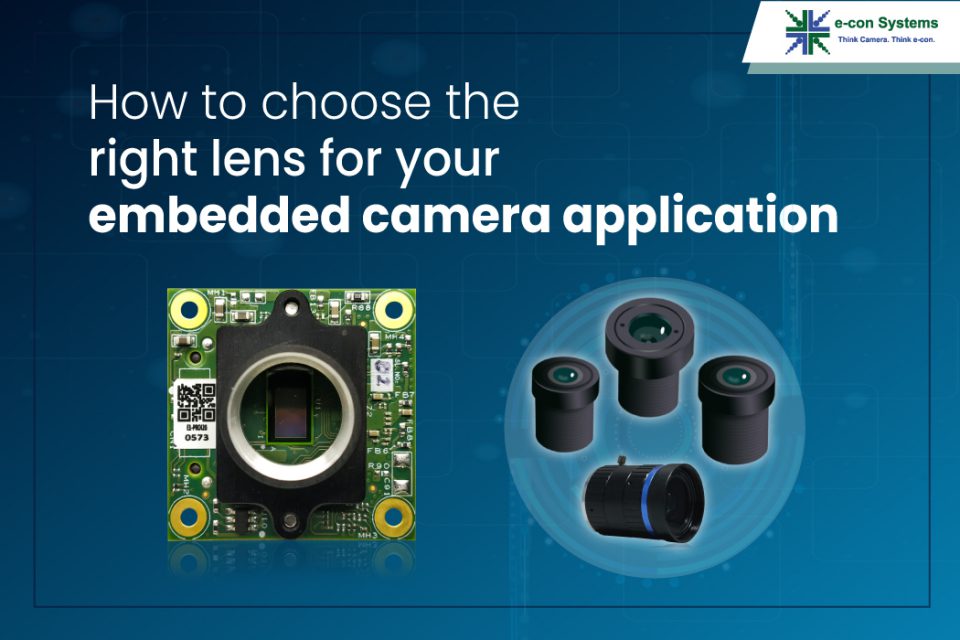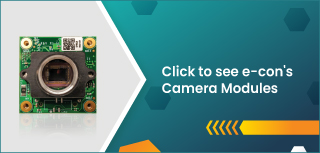Choosing an embedded camera involves multiple steps like outlining the application, choosing a sensor/camera module, selecting the right lens assembly, the right interface, the best host platform, and more.
Of these, picking the right lens is one of the most critical steps as it has a huge impact on image quality. The right lens helps to achieve the right field of view while at the same time ensuring the necessary details are captured.
In this article, let’s take a detailed look at the factors to be considered while choosing a lens for embedded cameras, and how they would impact the overall product performance.
What are the different types of lenses?
A camera lens is used to focus a beam of light onto a sensor array so that it can be converted to an image. The major types of lenses are:
· Wide angle lens: It has a focal length of 35 mm or lower – making nearby objects appear veritably large and objects at a moderate distance appear smaller.
· Normal lens: This type of lens has a focal length of roughly 50 mm or equal to the diagonal of the film format. A scene or object viewed through a normal lens will appear to have the same perspective as the way the human eye sees it.
· Telephoto lens: A telephoto lens has a focal length of 70 mm or higher. The focus of this lens makes far objects appear with precise detail.
In addition to these general lens types, there are also special lenses such as IR-cut lenses, lenses with wide focal length variance, wide and narrow angle lenses, etc.
Top factors to be considered while choosing an embedded camera lens
As already discussed, the image sensor receives the incident light which is either focused through a lens or any other optics. Hence, various lens parameters have to be looked at from the camera application point of view, and selection has to be made accordingly.
The factors to be considered are:
· Focal length
· Field of view
· Aperture
· Chief Ray Angle
· Resolving Power
· Distortion
· Focus Range
· Prime vs. Zoom lens
Let’s now discuss each of these in detail.
Focal Length
Focal length is the defining property of a lens. It is the distance between the lens and the point at which light rays converge when the lens is focused at infinity. Focal length varies based on the curvature of the lens and its material. Shorter focal lengths need the lens to be close to the sensor, and longer focal lengths need the lens to be far from the sensor, as shown below.
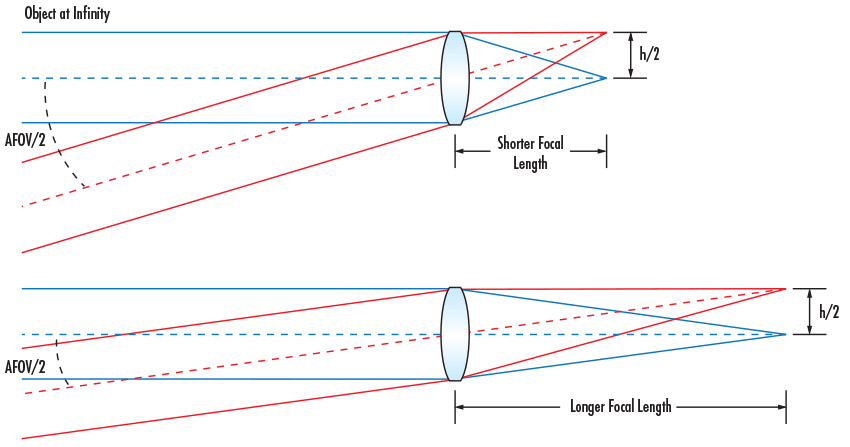 Figure 1: Lens with shorter and longer focal lengths
Figure 1: Lens with shorter and longer focal lengths
Embedded camera applications like barcode scanning, agricultural inspection, geographic information systems, and surveillance devices demand the ability to vary the focal length more – which can be achieved with an autofocus lens like liquid lens. These lenses are designed to operate across a wide range of focal lengths at high speeds – providing good image stabilization. For instance, for surveillance camera applications, a lens with a focal length ranging from 2.8mm to 12mm would be a good fit.
Field of View (FOV)
Field of View (FOV), which depends on the image circle, is one of the most important parameters for the selection of lenses. The imager size of the lens has to be greater than or equal to the size of the sensor for which the lens is being chosen. However, if the imager size is too high, you could still use the lens – but the actual field of view would be lost (you end up covering a larger field of view which will not form part of the ROI or Region Of Interest).
The below table shows the values of FOV corresponding to the image circle values:
|
FOV |
Image circle value |
|
89° |
3.5 mm |
|
125° |
6.2 mm |
|
135° |
7.1 mm |
The FOV mentioned is diagonal to the image sensor. And in some cases, it can be expressed in horizontal and vertical FOV values as shown below. These FOV values might vary based on the aspect ratio of the image sensor.
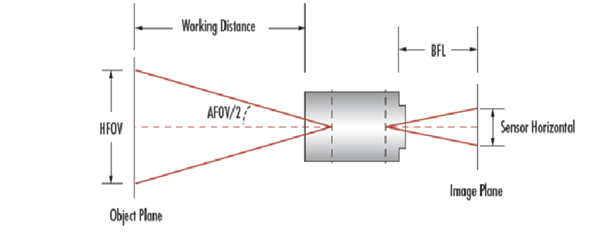 Figure 2: Horizontal and vertical FOV
Figure 2: Horizontal and vertical FOV
Back focal length (BFL) is the distance from the vertex of the last optical surface of the lens to the back focal point. Angular Field of View (AFOV) is the angle between any light captured at the horizontal and any light captured at the edge.
Some embedded camera applications require the FOV to be wide enough to cover a large viewing area. For instance, a fish-eye lens – characterized by wider FOV and larger Depth of Field (DOF) may be suitable for surveillance applications. For a zoom/telescopic application, a normal/narrow FOV lens is more suitable. However, in recent years, several lens manufacturers have started to cover this large application range – offering wide and narrow FOVs in a single lens.
To find the right field of view required for your application, please check out our FOV Calculator.
Aperture
Aperture of a lens is expressed in terms of the f number (ƒ/#) or f stop number. It refers to the ratio of a lens’ focal length to its aperture’s diameter. It indicates the amount of light coming through the lens. Lesser aperture/larger focal length gives more DOF, as illustrated below.
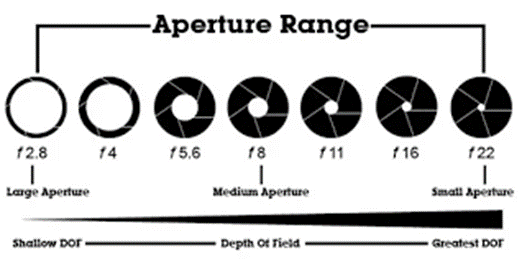 Figure 3: Aperture vs DOF
Figure 3: Aperture vs DOF
The aperture selection must be appropriate for the lighting conditions that the device operates in. For instance, in low-light applications, wider aperture lenses are recommended to allow as much light as possible to reach the sensor.
Chief Ray Angle (CRA)
CRA is another important parameter to be considered for the selection of lenses. The CRA value of the lens must be less than the CRA value of the sensor’s microlens to eliminate lens vignetting or color corruptions.
Sensor manufacturers tend to provide various CRA options for their sensors to suit various lens sizes and focal lengths. For example, an M8 lens with very low focal length has to have a high CRA since it would have very limited BFL (Back Focal Length) to focus the images. Whereas an M12 lens with higher focal lengths has the sensor’s CRA designed to accept lower angles and hence has a lower CRA.
Resolving Power
Resolution is the resolving capability of a lens. It represents how much details in the object plane can a lens focus on the image plane. If you are using a high-resolution USB camera say for a traffic monitoring application like Automatic License Plate Recognition (ALPR), you need to ensure that the lens can meet the maximum desired resolution. Usually, many embedded cameras embed high quality 100° wide angle (diagonal) M12 lenses.
Resolution is typically denoted by high frequency dark and bright line pairs and measured in line pairs per millimeter (lpmm), as shown below:
.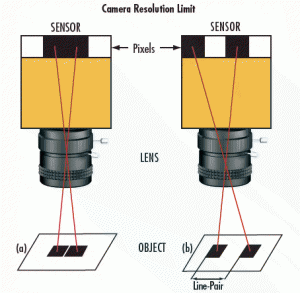
Figure 4: High frequency dark and bright line pairs of a focused object
To learn more about the process of calculating the resolving power of a lens, please visit the article How to calculate the resolving power of a lens.
Distortion
Distortion is the change in magnification from the center of the lens to the edges. There are predominantly two types of distortion – barrel distortion and pincushion distortion.
In barrel distortion (or negative distortion), points in the FOV appear too close to the center. Whereas in pincushion distortion (or positive distortion), points are too far away from the center.
Both the phenomena are shown below:
 Figure 5: Types of lens distortion
Figure 5: Types of lens distortion
These distortions are prominent when capturing images with wide-angle lenses. But both the distortions can be reduced by using compensating optical elements.
Besides the two distortions, color fringing or chromatic aberration can also be spotted. It occurs when the refractive index of the lens varies slightly with the wavelength of light. It tends to be less of a problem in high quality lenses. Achromatic lenses, which can focus two wavelengths of light into the same plane, are used in vision applications to reduce the effects of chromatic aberration.
The below image shows the chromatic aberration effects and their eradication:
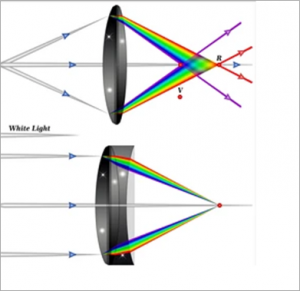 Figure 6: Chromatic aberration and its eradication
Figure 6: Chromatic aberration and its eradication
If the application needs to capture only the IR light for processing, then an IR bandpass lens can be used according to the IR wavelength. Also, to achieve color correction in lenses, most OEM cameras are embedded with an IR-cut filter which allows only the visible light to pass through by reflecting the unwanted IR light.
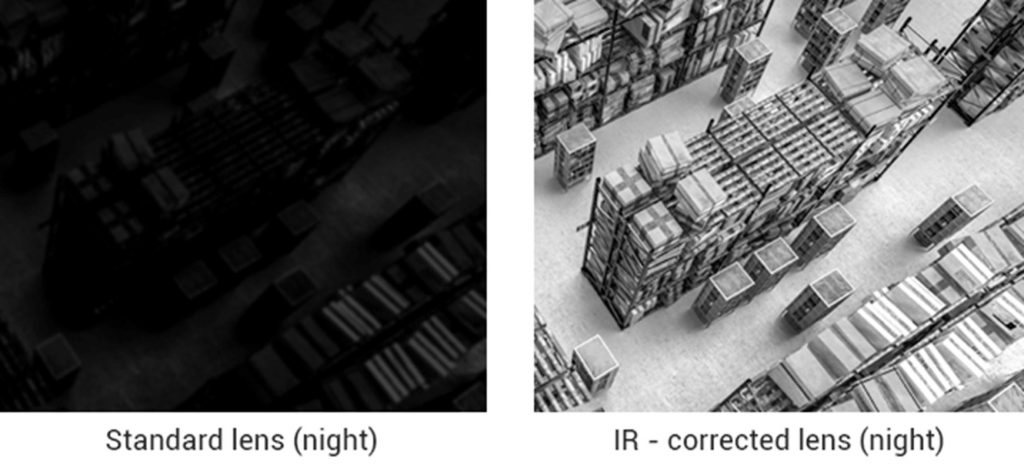 Figure 7: Comparison of outputs from a standard lens and IR-corrected lens
Figure 7: Comparison of outputs from a standard lens and IR-corrected lens
Focus Range
The focus range of a lens represents the minimum and maximum focus positions in the object plane. The working distance of a lens is critical in applications where several planes are involved. Either the lens has to cover the entire working range without any relative motion between the sensor and the lens, or move to change the focus planes based on the application. The lens to sensor distance has to be designed based on the working range.
Prime vs. Zoom lens
Choosing between a prime lens and a zoom lens is a critical step in figuring out how to choose the camera lens. A prime lens offers a fixed focal length, meaning it cannot zoom in or out. However, it typically delivers sharper images due to its simpler optical design and wider apertures, which are helpful in low-light environments.
In contrast, a zoom lens provides variable focal lengths, offering flexibility to capture subjects at varying distances without changing the lens. While this added versatility can benefit dynamic imaging needs, zoom lenses often include more moving elements, which may introduce compromises in optical clarity and increase the lens size. In embedded systems where space, calibration stability, or image consistency are important, this tradeoff must be weighed carefully.
Other factors to consider:
- Build quality and durability: Lenses for industrial or embedded use may require housing that can withstand vibration, shock, or exposure to dust and moisture. Selecting optics with reinforced mounts or sealed construction can improve operational lifespan in harsh environments.
- Coating and light transmission: Advanced lens coatings reduce internal reflections, flare, and ghosting. These coatings influence contrast and color accuracy, which can be critical when working with vision systems that depend on consistent illumination or color-based analytics.
- Focus mechanism: The choice between manual focus, fixed focus, and motorized focus mechanisms can impact system integration. Fixed focus lenses may be more reliable in systems with consistent working distances, while motorized focus can support remote calibration and adaptability in changing scenarios.
How e-con Systems can help with the lens selection process
e-con Systems, as a leading designer and supplier of embedded vision applications, can help you choose the right lens to meet your unique application requirements. We also support product developers with lens fixation and mount customizations, and help eliminate issues like lens vignetting and color distortions. We also have a proven track record in offering other customization services for our camera modules, including ISP tuning, firmware changes, enclosure design, carrier board design, etc.
Visit the Camera Selector to find the right camera for your application to get started with your camera integration journey.
If you are looking for help in choosing the right lens or in general integrating cameras into your products, please write to us at camerasolutions@e-consystems.com.

Prabu is the Chief Technology Officer and Head of Camera Products at e-con Systems, and comes with a rich experience of more than 15 years in the embedded vision space. He brings to the table a deep knowledge in USB cameras, embedded vision cameras, vision algorithms and FPGAs. He has built 50+ camera solutions spanning various domains such as medical, industrial, agriculture, retail, biometrics, and more. He also comes with expertise in device driver development and BSP development. Currently, Prabu’s focus is to build smart camera solutions that power new age AI based applications.




